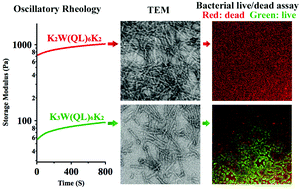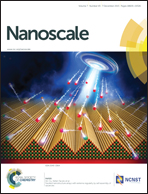Self-assembly of cationic multidomain peptide hydrogels: supramolecular nanostructure and rheological properties dictate antimicrobial activity†
Abstract
Hydrogels are an important class of biomaterials that have been widely utilized for a variety of biomedical/medical applications. The biological performance of hydrogels, particularly those used as wound dressing could be greatly advanced if imbued with inherent antimicrobial activity capable of staving off colonization of the wound site by opportunistic bacterial pathogens. Possessing such antimicrobial properties would also protect the hydrogel itself from being adversely affected by microbial attachment to its surface. We have previously demonstrated the broad-spectrum antimicrobial activity of supramolecular assemblies of cationic multi-domain peptides (MDPs) in solution. Here, we extend the 1-D soluble supramolecular assembly to 3-D hydrogels to investigate the effect of the supramolecular nanostructure and its rheological properties on the antimicrobial activity of self-assembled hydrogels. Among designed MDPs, the bactericidal activity of peptide hydrogels was found to follow an opposite trend to that in solution. Improved antimicrobial activity of self-assembled peptide hydrogels is dictated by the combined effect of supramolecular surface chemistry and storage modulus of the bulk materials, rather than the ability of individual peptides/peptide assemblies to penetrate bacterial cell membrane as observed in solution. The structure–property–activity relationship developed through this study will provide important guidelines for designing biocompatible peptide hydrogels with built-in antimicrobial activity for various biomedical applications.


 Please wait while we load your content...
Please wait while we load your content...